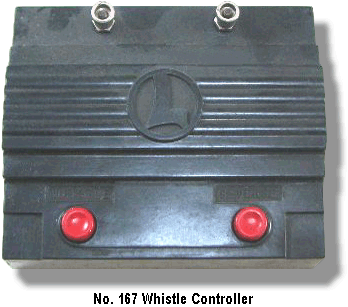Would the lower amperage can motor from the pE, work with the 233/244 Postwar type solenoid?
Not really... the 233W/234W tender whistle relay (what you call a solenoid) passes direct track power to the motor whereas the PCB of the PE tender conditions the power as applicable and appropriate for the can motor.
Since my best guess is also that the whistle activator control PCB is damaged, probably by 12v DC operation by the previous owner
I'm not so sure that is the the definitive deduction at all. Your symptoms indicate it is working perfectly. It is just that on DC operation, the whistle will constantly be sounding in at least one direction.
When I previously mentioned whistle activator control, I meant the control the operator used such as the whistle button, either in a control unit or on the transformer:


But again, those are for AC operation...
If you are to acquire anything more Lionel to operate on the bizzare (at least for us North Americans) 12VDC setup of the NAROOG, I would recommend you stick with LionChief, LionChief+, or LionChief+ 2.0 as they will be fully functional on 18VDC (probably speed limited on 12VDC) and come with their own remote control with whistle, bell, announcements etc and don't have a requirement to run on AC. I would also recommend that you work with the NAROOG and help them become more welcoming to all 3 rail operations by pioneering a proper AC loop to compliment their existing operations, but I also understand that AC O gauge in the UK is somewhat of a very small niche.




